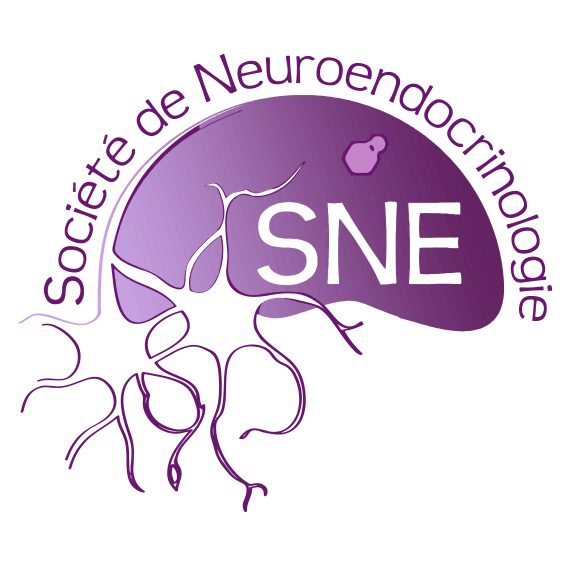Role du neuropeptide 26RFa dans le controle de l’homéostasie glucidique par l’hypothlamus.
Résumé
Le neuropeptide 26RFa et son récepteur, le GPR103, forment un système peptidergique exprimé par les noyaux hypothalamiques impliqués dans le contrôle de la balance énergétique. Le 26RFa stimule la prise alimentaire et exerce son activité orexigène en modulant l’activité du système NPY/POMC de l’hypothalamus. Notre équipe a récemment montré que le système 26RFa/GPR103 est également exprimé en périphérie où il est impliqué dans la régulation de l’homéostasie glucidique, le 26RFa agissant comme une incrétine. De plus, les activités orexigène et incrétine du 26RFa sont fortement perturbées par un régime riche en graisse entrainant une obésité et un diabète. Il est maintenant bien établi qu’une coopération entre l’hypothalamus et les organes périphériques concourt à la régulation de l’homéostasie glucidique. L’ensemble des observations faites jusqu’à présent indiquent que le 26RFa pourrait jouer un rôle reliant la régulation hypothalamique de l’équilibre énergétique et l’homéostasie du glucose, et pourrait de ce fait être une cible thérapeutique intéressante pour prévenir/guérir le diabète de type 2. Dans ce contexte, l’objectif de ma thèse a été de comprendre le rôle du 26RFa dans la régulation centrale de l’homéostasie du glucose. Pour cela, nous avons caractérisé l’impact de l’absence de 26RFa sur la régulation de l’homéostasie glucidique dans un modèle murin mutant pour le 26RFa, récemment généré. Les souris dépourvues de 26RFa montrent une altération de la tolérance au glucose associée à une diminution de la sécrétion d’insuline et une augmentation de la production hépatique de glucose. En outre, les souris déficientes en 26RFa montrent une altération histologique du pancréas endocrine, se traduisant par une augmentation du nombre et de la taille des îlots pancréatiques, ainsi qu’une diminution du contenu des cellules β-pancréatiques en insuline. Ces observations confirment l’importance du 26RFa dans la régulation de l’homéostasie glucidique. Dans un second temps, nous avons étudié l’implication du système neuropeptidergique 26RFa/GPR103 dans la régulation hypothalamique de l’homéostasie glucidique. L’administration centrale de 26RFa (i.c.v.) améliore la tolérance au glucose de façon similaire à l’administration périphérique (i.p.) du peptide. Cet effet est associé à une augmentation de la sécrétion d’insuline par le pancréas. De plus, l’insuline stimule fortement la libération de 26RFa par des explants hypothalamiques en survie et peut activer directement une sous-population de neurones à 26RFa exprimant le récepteur de l’insuline. Enfin, l’insuline perd son effet central anti-hyperglycémiant lors de l’administration centrale d’un antagoniste du récepteur du 26RFa, le GPR103, et chez les souris mutantes pour le 26RFa. L’ensemble de ces données indiquent que le 26RFa est un acteur de la régulation centrale de l’homéostasie du glucose qui relaie certains effets centraux de l’insuline. En particulier, nous avons montré que le 26RFa central relaie l’effet de l’insuline sur sa propre sécrétion par le pancréas, mais ne relaie pas son effet sur la production hépatique de glucose. Ces données placent le système neuropeptidergique 26RFa/GPR103 au coeur de la régulation de l’homéostasie glucidique en tant qu’acteur majeur de la coopération entre l’hypothalamus et la périphérie.
Abstract
The neuropeptide 26RFa and its receptor, GPR103, form a peptidergic system expressed by the hypothalamic nuclei involved in the control of energy balance. 26RFa stimulates food intake and exerts its orexigenic activity by modulating the NPY/POMC system of the hypothalamus. Our team has recently shown that the 26RFa/GPR103 system is also expressed at the periphery where it is involved in the regulation of glucose homeostasis, with 26RFa acting as an incretin. In addition, the orexigenic and incretin activities of 26RFa are strongly disrupted by a high-fat diet leading to obesity and diabetes. It is now well established that the cooperation between the hypothalamus and peripheral organs contributes to the regulation of carbohydrate homeostasis. All the observations made to date indicate that 26RFa could play a role linking the hypothalamic regulation of energy balance and glucose homeostasis, and could be an interesting therapeutic target to prevent/cure type 2 Diabetes. In this context, the objective of my thesis was to understand the role of 26RFa in the central regulation of glucose homeostasis. For this, we firstly characterized the impact of the absence of 26RFa on the regulation of glucose homeostasis in a recently generated mutant mouse model for 26RFa. Mice lacking 26RFa show an alteration in glucose tolerance associated with a decrease in insulin secretion and an increase in hepatic glucose production. In addition, the mice show histological alterations of the endocrine pancreas, resulting in an increase in the number and size of pancreatic islets and a decrease in the insulin content of β-pancreatic cells. These observations confirm the important role of 26RFa in the regulation of glucose homeostasis. In a second step, we studied the involvement of the 26RFa/GPR103 neuropeptidergic system in the hypothalamic regulation of glucose homeostasis. Central administration of 26RFa (i.c.v.) improves glucose tolerance in a manner similar to peripheral administration (i.p.). This effect is associated with increased insulin secretion from the pancreas. In addition, insulin strongly stimulates the release of 26RFa from surviving hypothalamic explants and directly activates a subpopulation of 26RFa neurons expressing the insulin receptor. Finally, insulin loses its central anti-hyperglycemic effect when a 26RFa receptor antagonist, GPR103, is centrally administered and in 26RFa mutant mice. All these data indicate that 26RFa is an actor in the central regulation of glucose homeostasis by relaying some central effects of insulin. In particular, we have shown that central 26RFa relays the effect of insulin on its own secretion by the pancreas but does not relay its effect on hepatic glucose production. These data place the 26RFa/GPR103 neuropeptidergic system at the core of the regulation of glucose homeostasis, as a major player in the cooperation between the hypothalamus and the periphery.
Présentée le 10 juillet 2020
Laboratoire où a été préparée la thèse : Neuroendocrine EndOcrine and GeRminal DIfferentiation and Communication – Ecole doctorale Normande de Biologie Intégrative, Santé, Environnement, Normandie
Sous la direction de Nicolas Chartrel
Co-encadrante Marie Picot

